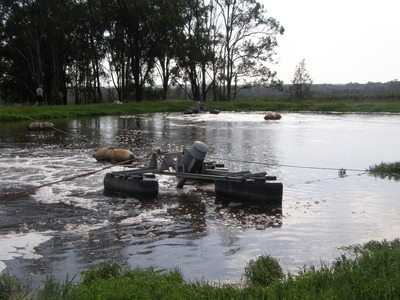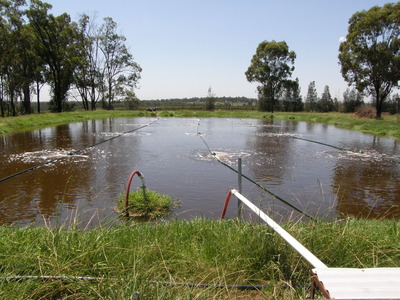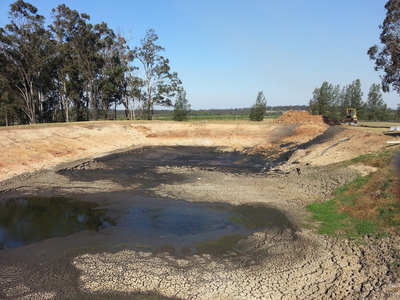Reducing energy for aeration of wastewater at winery
Monday, 21 October, 2013
Tamburlaine was established in 1966 by Cessnock doctor Lance Allen. In 1985, the winery was purchased by a small group of friends and relatives led by managing director and chief winemaker Mark Davidson who has maintained a pioneering vision that has turned Tamburlaine into one of Australia’s largest organic wine producers.
After a long period of vineyard observation and trials, in 2002, Tamburlaine took the first steps toward organic certification for some of its Hunter Valley blocks. This meant a full management program which replaced synthetic chemicals, improved soil organic matter and stimulated the vine’s natural defences.
After undergoing a three-year conversion period, it received A-grade certified organic status for the first blocks and has since extended the certification to all sites. To carry the ‘Australian Certified Organic’ bud logo on labels requires rigorous annual audits by the Biological Farmers of Australia (BFA) to ensure the absence of pesticides, herbicides, fungicides and synthetic fertilisers in the production of the wines.
Tamburlaine has undergone a significant transformation in the 27 years since the Hunter winery was acquired from its original owner. It now has organic and biodynamic vineyards in the Hunter Valley and the Orange highlands of NSW. Its 93-hectare Orange property has also integrated biodynamic methods into its organic management system. This property is one of the largest certified-organic vineyards in the Southern Hemisphere.
In line with its sustainable farming practices, Tamburlaine has adopted an environment management system (EMS) for the Hunter winery, including strategies for its water and solid-waste management, energy saving and environmental purchasing. More recent attention to energy efficiency has reduced Tamburlaine’s annual energy consumption in the business as a whole to half, saving nearly 740 tonnes of carbon pollution and more than $110,000 per annum. The improvements in this regard are ongoing.
The winery is now claimed to be the first carbon-neutral winemaker in the country, with its recent entry into trading carbon credits. The future will see fewer credits required; with the plan to one day see the extra carbon-fixing capacity of organic vineyards recognised as offsets for the wineries’ day-to-day activities.
In addition to its own vineyards, Tamburlaine contracts two other sizeable vineyards, one in Orange and one in the Hunter. Approximately 70% of the winery’s total crush comes from the 123 hectares now in Orange and the remainder comes from 40 hectares of Hunter Valley vineyards. It produces 30% of its wine for the international market and 70% for the domestic market. Its major export markets are China, Nepal, Sweden, the US, Japan and Korea.
The winery continues to push the boundaries of innovation in organic farming to create high-quality wine that best represents the ‘terroir’, where the wine is grown, naturally.
Energy-savings project
Wineries produce wastewater from the production process which requires aeration prior to re-use or irrigation. Conventional aeration systems can contribute to a high percentage of a business energy costs. As part of its mission to reduce its carbon footprint, Tamburlaine Wines researched new technologies to reduce the energy for aeration of its wastewater for re-use.
The winery had existing 2 x 15 kW mechanical surface aerators as shown below.

For Earth has now installed an energy-efficient aeration system for the winery. The For Earth micro-bubble, low-energy, sub-surface diffuser system supplies ambient air by a 3.0 kW side-channel blower.

The system has been installed since January 2010 and has shown significant energy savings, water quality and operational cost reductions (see Table 1.1). An added benefit has been reduced noise pollution and visual improvement such as return of birdlife to dam.
| Aeration | kW | Hours operation | kWh rate | Total cost/day | Total cost/pa |
| Existing | 30 | 24 | 0.32 | $ 230.40 | $ 84,096.00 |
| For Earth solution | 3 | 24 | 0.32 | $ 23.04 | $ 8,409.60 |
| Annual energy saving | $ 75,686.40 | ||||
The company also applied the For Earth biological treatment product called For Earth Bio. This product comes in liquid form and contains bacteria specific to the nitrogen cycle to accelerate water remediation and odour control. The added benefit of the product at sewage treatment plants is that it maintains low solids/sludge volume in the dam and reduces expensive mechanical sludge pump outs.

Researchers trial magnetic resin to remove PFAS
A magnetic resin invented at The University of Queensland will be trialled at wastewater...
A sustainable approach to increase wastewater recycling
Flinders University research is investigating improved effluent treatment and biosolids removal...
Inverell upgrades 30-year-old aeration system
The project entailed building a new tank at the Inverell Sewage Treatment Plant, to allow...










